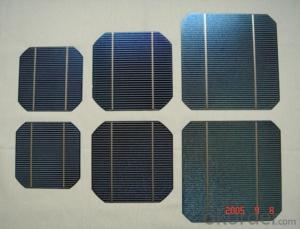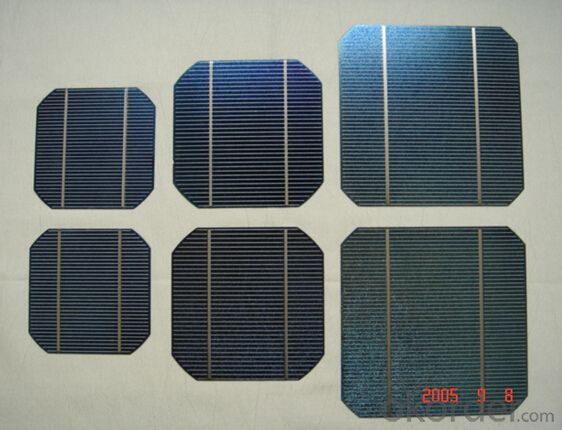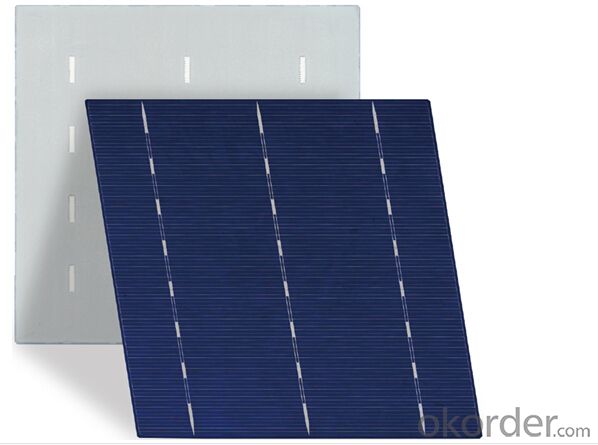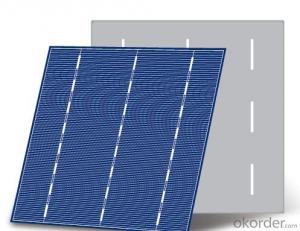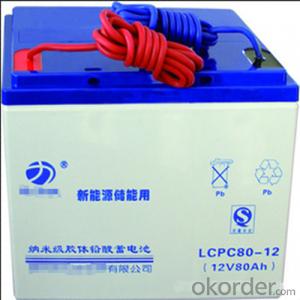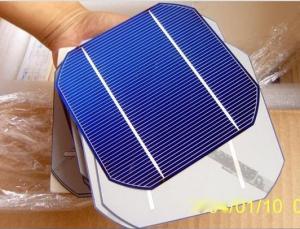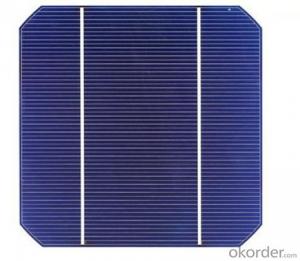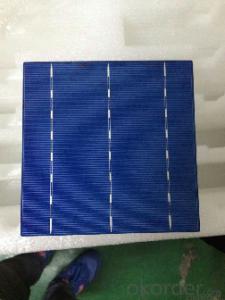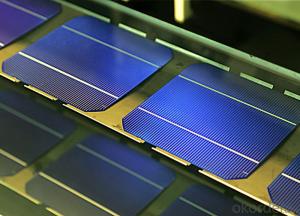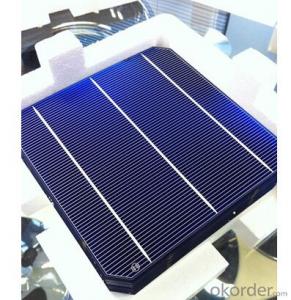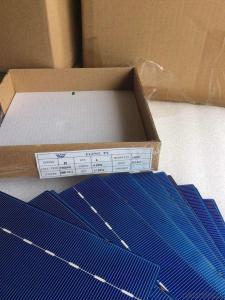Sunyima World-Beating Solar Cells - 25 Years Life Time - 17.5% Efficiency
- Loading Port:
- Shanghai
- Payment Terms:
- TT OR LC
- Min Order Qty:
- 1000 pc
- Supply Capability:
- 5000000 pc/month
OKorder Service Pledge
OKorder Financial Service
You Might Also Like
Brief Introduction of Solar Cells
A solar cell, is an electrical device that converts the energy of light directly into electricity by the photovoltaic effect, which is a physical and chemical phenomenon. It is a form of photoelectric cell, defined as a device whose electrical characteristics, such as current, voltage, or resistance, vary when exposed to light. Solar cells are the building blocks of photovoltaic modules, otherwise known as solar panels.
Introduction of our Company
We were officially founded in 2008 after two years of careful and intense preparation. Now, we are ready to become a leader in developing and implementing Renewable Energy Technologies Worldwide and even more confident about its mission: "Renewable energy renews your future".
Any professional and any type of investor cannot ignore that the topic: Source of Energy is becoming a common concern in any conversation as the Global Warming shows signs of worsening. The world needs to decrease its dependence on crude oil.
This crossroad creates an increasing opportunity to all crude oil substitutes and clean energy technologies. We are focused primarily on solar energy because it is readily available, infinitely, and inexhaustible. Additionally, intense research is promising that solar energy production costs will reach grid parity (the ability to compete with crude oil energy generation costs) in a very near future.
We firmly believes that saving energy and reducing/eliminating pollutants is more than a good ideal but a responsibility that should be demanded from everyone. We are investing in locations where solar power is suitable, and supporting public and large utility organizations in designing and implementing solar technologies.
Specifications of Polycrystalline Solar Cells
Format : 156 mm × 156 mm ± 0.5 mm
Thickness: 210 μm ±40 μm
Front (-) : 1.5mm bus bars (silver),blue anti-reflection coating (silicon nitride)
Back (+) : 2.5mm wide soldering pads (silver) back surface field (aluminium)
Efficiency (%) | Pmpp (W) | Umpp (V) | Impp (A) | Voc (V) | Isc (A) |
18.00% | 4.38 | 0.528 | 8.291 | 0.631 | 8.869 |
17.80% | 4.33 | 0.525 | 8.252 | 0.629 | 8.821 |
17.60% | 4.29 | 0.532 | 8.053 | 0.633 | 8.541 |
17.40% | 4.23 | 0.528 | 8.092 | 0.624 | 8.632 |
17.20% | 4.19 | 0.524 | 7.992 | 0.62 | 8.458 |
17.00% | 4.14 | 0.52 | 7.972 | 0.623 | 8.5 |
Advantage of Polycrystalline Solar Cells
1. Tire-1 Solar Cells’ Manufacturer Quality Guarantee. With a complete and sophisticated quality government system, our Quality Management have arrived world’s leading place. Customer can receive Tire-1 Cells Maker’s Quality Standard Products.
2. Trusted Warranty. We can supply trusted after-sales service to our customer. If our cells are found not in conformity to the specification of manufacturer, or should the inspected quantity found in shortage, or should the packing found damaged, the buyer has the right to claim to the seller. The claim, if any, should be presented to seller within 30 days after cargo's arrival date to the port, together with related inspection report and photos issued and provided by a reputable independent surveyor such as SGS.
3. World’s Leading Manufacturer Equipment. We imported the newest and leading production equipment from abroad. Advanced equipment can guarantee the stable quality of cells. Auto production line can also save labor cost which will further cut our production cost.
4. Bulk supply: With the production capacity of 500MW, we can produce large quantity every month. This can satisfy most customer requirement.
Usage of Polycrystalline Solar Cells
Solar cells are often electrically connected and encapsulated as a module. Photovoltaic modules often have a sheet of glass on the front (sun up) side, allowing light to pass while protecting the semiconductor wafers from abrasion and impact due to wind-driven debris, rain, hail, etc. Solar cells are also usually connected in series in modules, creating an additive voltage. Connecting cells in parallel will yield a higher current; our solar cells have passed IEC Certification. With high and stable quality, our cells can greatly improve the performance of Solar Modules.
Applications of Polycrystalline Solar Cells
Assemblies of photovoltaic cells are used to make solar modules which generate electrical power from sunlight, as distinguished from a "solar module" or "solar panel". A solar array generates solar power using solar energy.
Packaging & Delivery of Polycrystalline Solar Cells
Carton Box Package and Deliver by air. It should be noticed that it should be avoid of water, sunshine and moist.
Factory Picture of Solar Cells
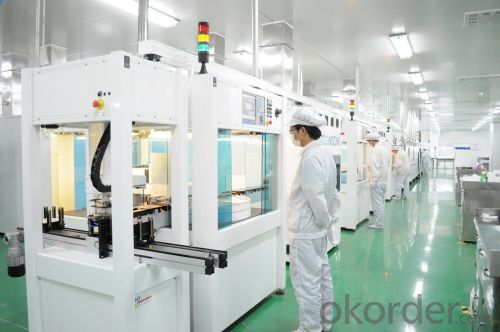
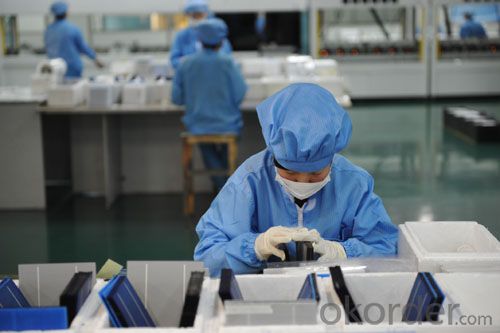
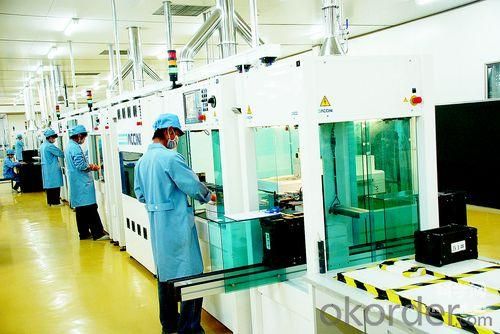
Package Picture of Solar Cells
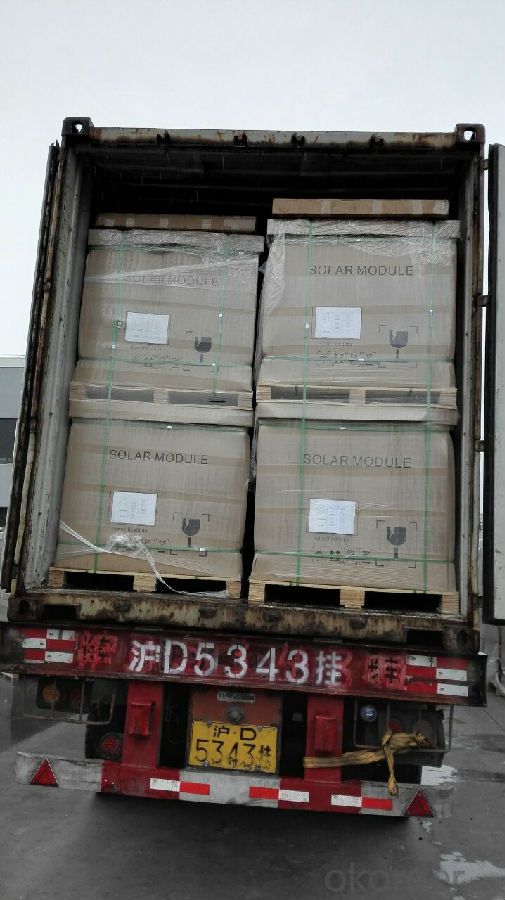
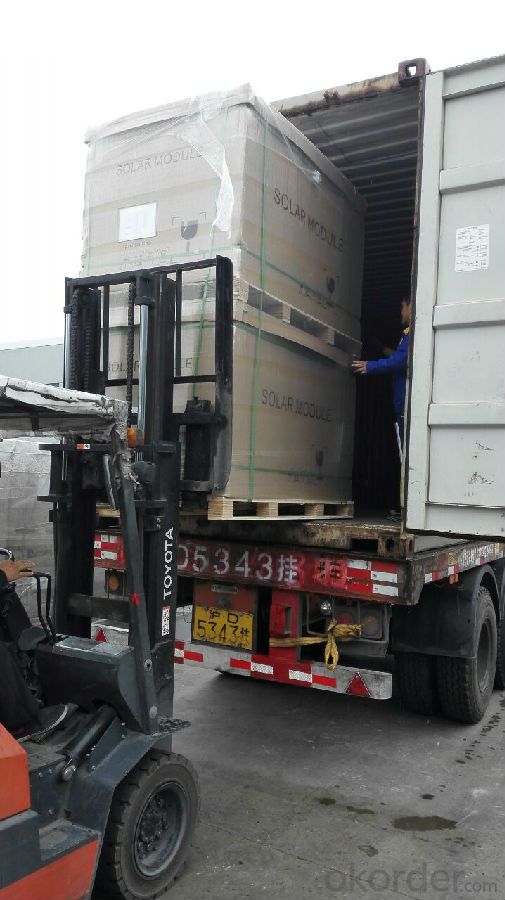
FAQ
We have organized several common questions for our clients,may help you sincerely:
1. What’s price per watt?
A: It’s depends on the quantity, delivery date and payment terms of the order. We can talk further about the detail price issue. Our products is high quality with lower price level.
2. Can you tell me the parameter of your solar cells?
We have different series of cells with different power output, both from c-si to a-si. Please take our specification sheet for your reference.
3. How do you pack your products?
We have rich experience on how to pack the panels to make sure the safety on shipment when it arrives at the destination.
4. Can you do OEM for us?
Yes, we can.
5. How long can we receive the product after purchase?
In the purchase of product within three working days, We will arrange the factory delivery as soon as possible. The perfect time of receiving is related to the state and position of customers. Commonly 7 to 10 working days can be served.
- Q: Can solar cells be used in military vehicles?
- Yes, solar cells can be used in military vehicles. They can help power various electronic systems and equipment, reducing reliance on traditional fuel sources and increasing energy efficiency. Additionally, solar cells can provide a sustainable and renewable energy solution for the military, especially in remote or off-grid operations.
- Q: Can solar cells be used in cloudy or rainy weather?
- Yes, solar cells can still be used in cloudy or rainy weather, although their efficiency will be reduced. While solar cells generate less electricity under such conditions due to reduced sunlight intensity, they can still produce some power. Additionally, advancements in solar technology have improved the ability of solar cells to capture diffused and indirect sunlight, making them more viable in less optimal weather conditions.
- Q: What is the maximum voltage output of a solar cell?
- The maximum voltage output of a solar cell can vary depending on various factors such as the type and design of the solar cell, as well as the intensity of sunlight. However, for a typical silicon solar cell, the maximum voltage output is usually around 0.5 to 0.6 volts.
- Q: How do solar cells affect property value?
- Solar cells can positively affect property value by reducing energy costs, increasing energy efficiency, and providing a sustainable and environmentally friendly energy source. Additionally, solar panels can be seen as a desirable feature by potential buyers, leading to increased demand and higher property values.
- Q: What is the effect of dust or dirt on solar cell performance?
- The presence of dust or dirt on solar cells can significantly reduce their performance by blocking sunlight from reaching the cells, thereby reducing their efficiency in converting sunlight into electricity. The dust or dirt particles act as a barrier, preventing the photons from reaching the semiconductor material within the solar cells. This decreases the amount of electricity generated, resulting in a decrease in overall power output. Therefore, regular cleaning and maintenance of solar panels is essential to maximize their performance and ensure optimal energy production.
- Q: Can solar cells be used in public transportation systems?
- Yes, solar cells can be used in public transportation systems. They can be integrated into vehicles such as buses, trams, and trains to generate electricity from sunlight, reducing reliance on conventional energy sources and lowering carbon emissions. Solar-powered public transportation systems have been successfully implemented in various cities around the world, demonstrating the feasibility and benefits of using solar cells in this sector.
- Q: Can solar cells be used to power remote oil and gas monitoring systems?
- Yes, solar cells can be used to power remote oil and gas monitoring systems. Solar cells convert sunlight into electrical energy, which can be stored in batteries or used directly to power monitoring systems. This renewable energy source provides a reliable and sustainable solution for remote locations where traditional power infrastructure may be unavailable or costly to install.
- Q: How do solar cells perform in humid climates?
- Solar cells can still perform efficiently in humid climates. However, high humidity levels can slightly reduce the overall performance of solar cells due to the moisture in the air. The moisture can create a thin film on the surface of the solar panels, which reduces the amount of sunlight that can be absorbed by the cells. Additionally, increased humidity can also affect the electrical connections and can potentially lead to corrosion or damage over time. Nonetheless, advancements in solar cell technology, such as anti-reflective coatings and improved waterproofing, have helped mitigate the impact of humidity on solar cell performance.
- Q: Can solar cells be used for powering agricultural equipment?
- Yes, solar cells can be used for powering agricultural equipment. Solar panels can generate electricity from sunlight, which can then be used to power various agricultural equipment such as irrigation systems, water pumps, and electric fences. This can provide a sustainable and environmentally friendly alternative to traditional power sources, especially in remote or off-grid farming locations.
- Q: Why should the solar cells be laserized?
- Compared to the mechanical scribing in terms of slag will not cause short circuit, laser scribing is non-contact processing way, will not cause damage to the substrate.
Send your message to us
Sunyima World-Beating Solar Cells - 25 Years Life Time - 17.5% Efficiency
- Loading Port:
- Shanghai
- Payment Terms:
- TT OR LC
- Min Order Qty:
- 1000 pc
- Supply Capability:
- 5000000 pc/month
OKorder Service Pledge
OKorder Financial Service
Similar products
Hot products
Hot Searches
Related keywords
